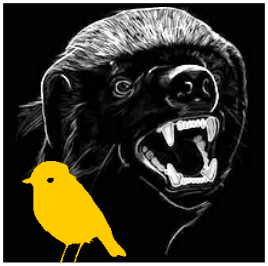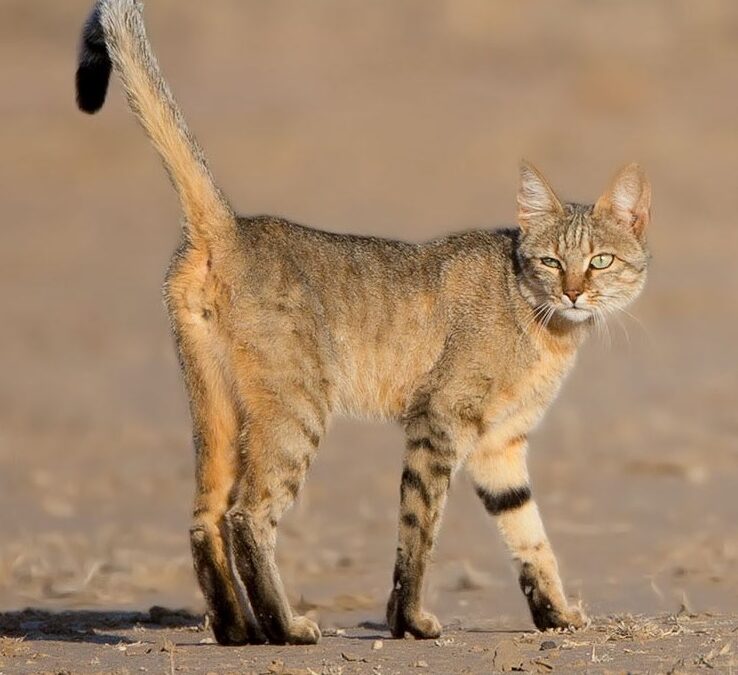Black-and-white armbands remind bullies that small cats can punch above their weight.

Prof. Mumblebard claims: “Skunks defend themselves by spraying obnoxious secretions. Their bold black and white colouration is an anti-predatory adaptation that warns would-be predators of this concealed ‘spraygun’ weapon. It goes without saying that – despite belonging to the same order as skunks – all 14 genera and 39 wild, extant species in the cat family lack warning colouration. After all, felids are thoroughly committed to concealment as part of their specialisation for hunting, and no cat possesses specialised defences analogous with the obnoxious secretions that characterise mustelids.”
Robin and the Honey Badger respond: “It’s true that no cat achieves the whole-body aposematism typified by skunks and other mustelids. However, what no biologist has previously noticed is that several species or subspecies of small to medium-size cats have incongruous markings – which defy explanation as either camouflage or a social flag – on the inner surface of the forelegs. The bold pattern is of dark bars against a pale background, contrasting with most of the coat of the species or subspecies in question. The anatomical location of this display makes sense for warning colouration because it emphasises the weapon of deterrence – namely the forefoot – in interspecific conflict. Furthermore, the inner surface of the foreleg – normally hidden during stalking – can be presented when the cat stands tall while arching its back and when it reaches up to strike the aggressor. Although felids have not evolved specialised defensive organs, they surpass other carnivores in possessing twenty particularly sharp claws which can cause lethal infection as well as lacerating the sensitive nose and vulnerable eyes of a larger carnivore. Environments which expose small- to medium-size felids to the risk of attack by several coexisting species of large carnivores are those likely to have exerted particular selective pressures for this form of warning colouration. This is suggested by the fact that aposematic barring on the inner surface of the foreleg has emerged separately in at least four genera of cats, indicating adaptative modification of the ancestral patterns of colouration by certain species, subspecies, and colour morphs. The surprising conclusion is that felids in certain niches have developed aposematic tactics within the framework of their overall strategy of camouflage.”

Notice to readers: Other aspects of the same topic can be found in our blog-post, “A best-kept secret of wild cats: the aposematic bar code”. And see our video posted below.
Please join us here at the Bio-edge with your own comments. In the discussion below we encourage links to any evidence supporting either Prof. Mumblebard or Robin and the Honey Badger. Illustrations are welcome but please cite all sources or we may be forced under copyright to delete your comment.
***
Featured image: African wildcat (Felis silvestris cafra) in the Kalahari (©Hendri Venter)

